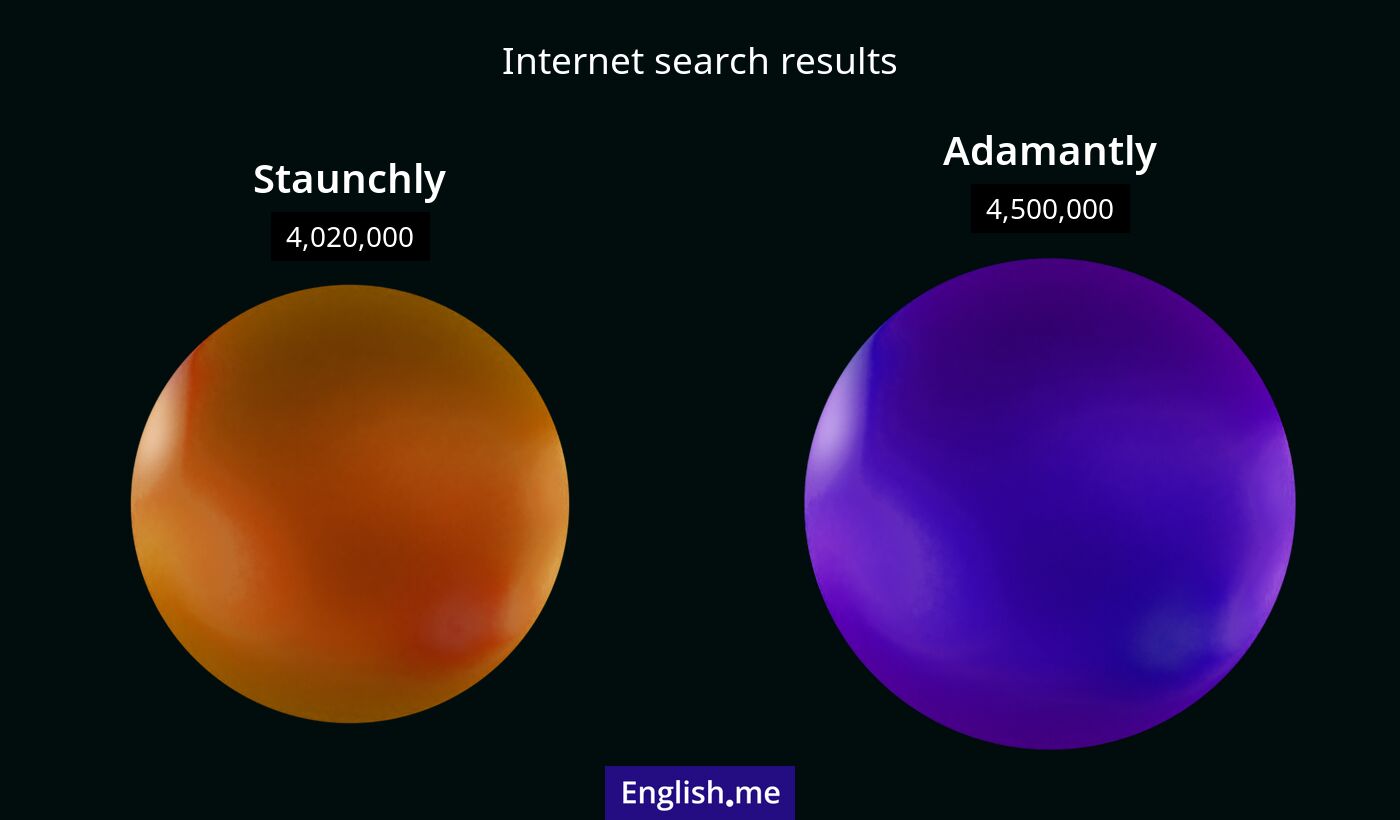"Staunchly" vs. "adamantly": a close look at resolute language
Reviewed and edited by  Lloyd Cooper 11/10/2024, 07:26
Lloyd Cooper 11/10/2024, 07:26
English.me team member

 What is similar?
What is similar?
Both words describe a firm, steadfast, and unwavering position or attitude. They are often used interchangeably when someone is resolutely standing by an opinion, belief, or decision.
 What is different?
What is different?
While both indicate firmness, "staunchly" usually implies loyalty or support, often used in political or ideological contexts, whereas "adamantly" emphasizes firm refusal or resistance, often used when describing someone's opposition or unwillingness to change.
 Which one is more common?
Which one is more common?

 Examples of usage
Examples of usage
Staunchly- She staunchly defended her friend against false accusations.
- The politician was staunchly opposed to the proposed new law.
- He was recognized for his staunchly loyal support to the cause.
- She adamantly refused to comment on the rumors.
- He was adamantly against the changes in the policy.
- They insisted adamantly that they would not back down.

 English
English español
español française
française italiano
italiano deutsche
deutsche 日本語
日本語 polski
polski česky
česky svenska
svenska Türkçe
Türkçe Nederlands
Nederlands